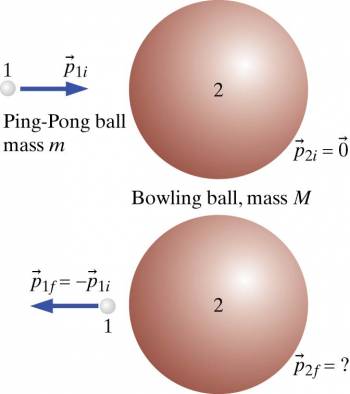Scattering: Collisions in 2D and 3D: Difference between revisions
No edit summary |
No edit summary |
||
| Line 22: | Line 22: | ||
The collision of an alpha particle (helium nucleus) with the nucleus of a gold atom | The collision of an alpha particle (helium nucleus) with the nucleus of a gold atom | ||
[[File:ImpactParameter. | [[File:File:ImpactParameter.png]]<ref>[http://www.physicsbook.gatech.edu/File:ImpactParameter.png#file]</ref> | ||
===Simple=== | ===Simple=== | ||
Revision as of 22:17, 4 December 2015
Claimed by: Andreas Ward
The Main Idea
Unlike normal collisions, atomic and nuclear collisions are far too small to observe the curving trajectories of the interacting particles. The only thing that can be noticed is the initial and final states of the interaction. Scattering experiments are incorporated in the world of collisions to be able to study the minute details (structure) of atoms, nuclei, and other tiny particles as the interact with one another.
A Mathematical Model
What are the mathematical equations that allow us to model this topic. For example [math]\displaystyle{ {\frac{d\vec{p}}{dt}}_{system} = \vec{F}_{net} }[/math] where p is the momentum of the system and F is the net force from the surroundings.
A Computational Model
How do we visualize or predict using this topic. Consider embedding some vpython code here Teach hands-on with GlowScript
Example
The collision of an alpha particle (helium nucleus) with the nucleus of a gold atom
File:File:ImpactParameter.png[1]
Simple
Middling
Difficult
Connectedness
- How is this topic connected to something that you are interested in?
- How is it connected to your major?
- Is there an interesting industrial application?
History
Put this idea in historical context. Give the reader the Who, What, When, Where, and Why.
See also
Are there related topics or categories in this wiki resource for the curious reader to explore? How does this topic fit into that context?
Further reading
Matter and Interactions, Volume I: Modern Mechanics, 4th Edition. (Chapter 10.6)
External links
References
Chabay, Ruth W., Bruce Sherwood. Matter and Interactions, Volume I: Modern Mechanics, 4th Edition. Wiley, 19/2014.
